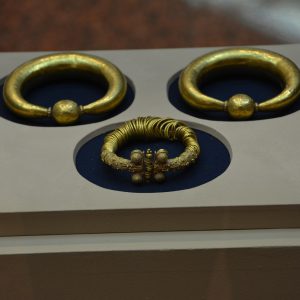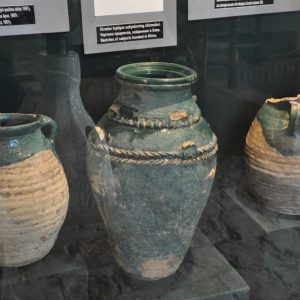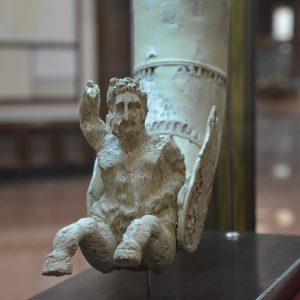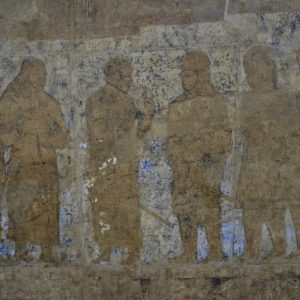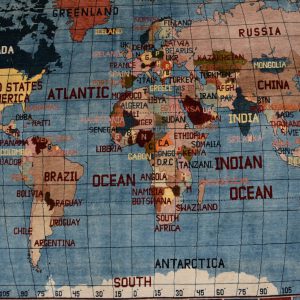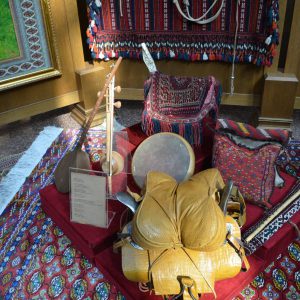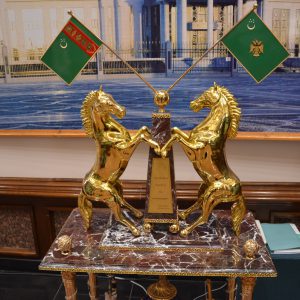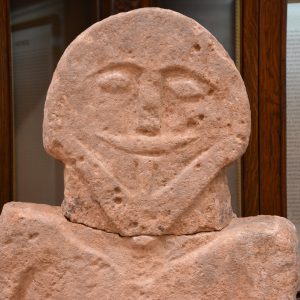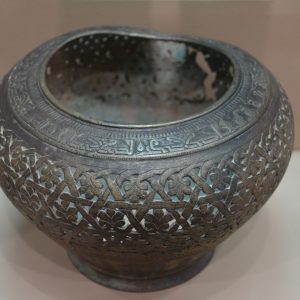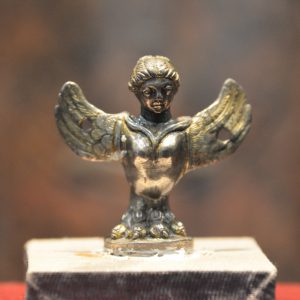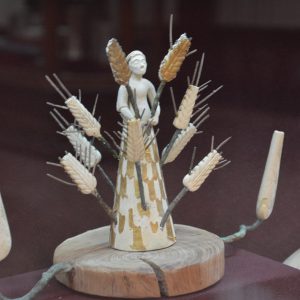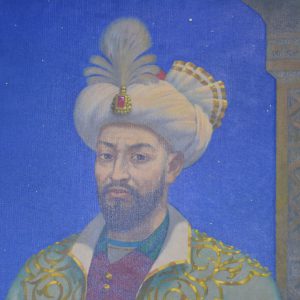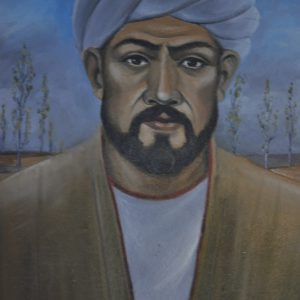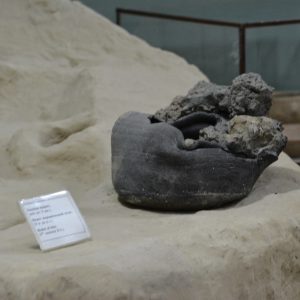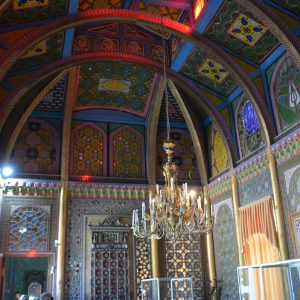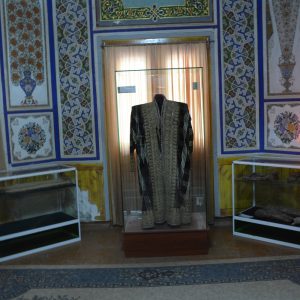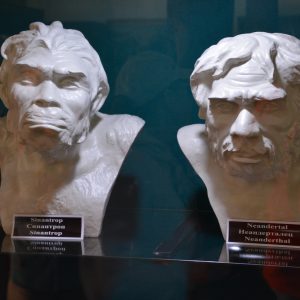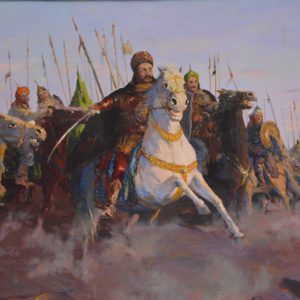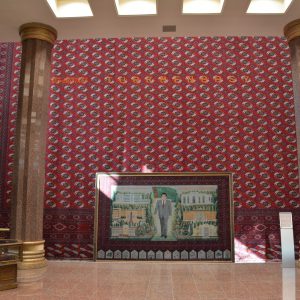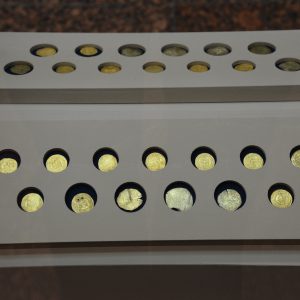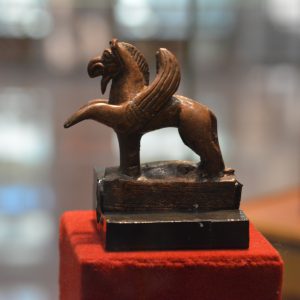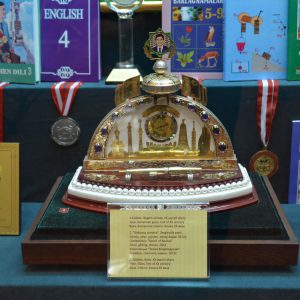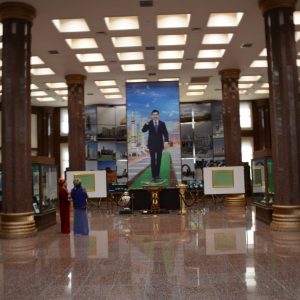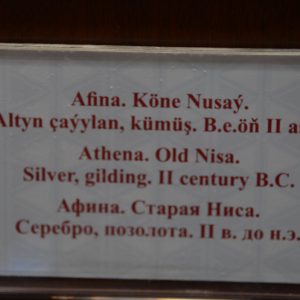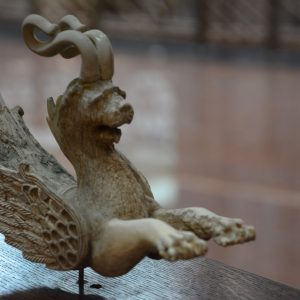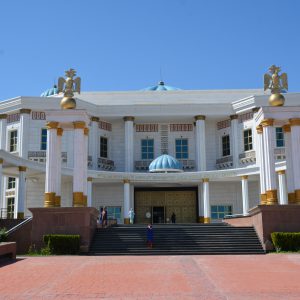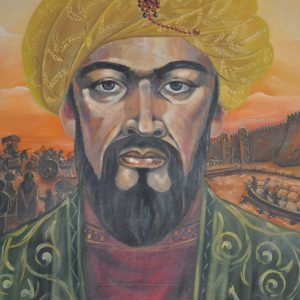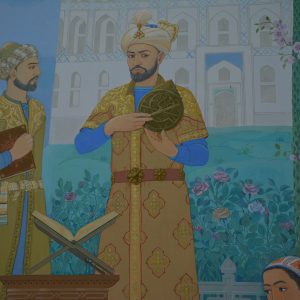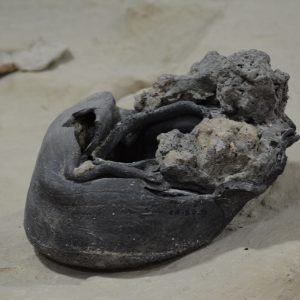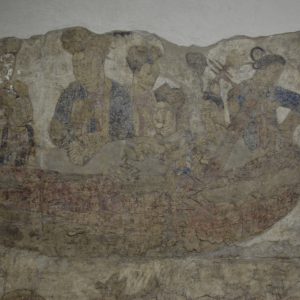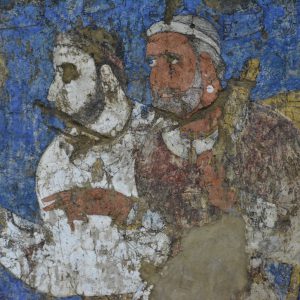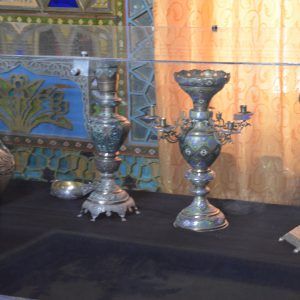National museums and art galleries in Central Asia have rich and interesting collections including unique ancient pieces and are worth visiting. Most of them are located in the cities and towns of the main tourist routes they can be easily fit into any itinerary.
Apart from museums showing interesting ancient and historical items, in present-day Central Asia there is quite a number of art galleries where contemporary art is exhibited. You may find these galleries Samarkand, Tashkent, Bishkek and Almaty.
Afrasyob Museum in Samarkand
The lands of the present Samarkand were inhabited since ancient times. The capital of Sogdiana Empire Marakanda was founded there in the 8th century B.C. and until the 7th century A.D, it played an important role in Central Asia. The Sogdian Empire and Marakanda (another name for this site is Afrasyob) had been finally destroyed by Arabs in 651 and soon after that the new town of Samarkand appeared nearby. Nowadays the remains of the ancient Marakanda are located in the central part of Samarkand and archaeologists work there trying to bring up more traces of the ancient Empire.
There is Afrasyob museum with ancient frescoes dating back to the 7th century found in the ancient Afrasyob Palace. As people from Sogda were not Muslims, their decorations included people and animals. Looking at the remains of the frescoes we may well imagine how these people looked like. These frescoes together some other items are unique true pieces left from once a great empire. On the second floor of the museum one may see a chronological tour of all 11 layers of civilization that is Afrasyob.
Savitsky museum in Nukus
This is a really hidden treasure. it is often called "The Louvre in the desert"and it possesses the second largest and important collection of Russian avant-guard art in the world (after Russian museum in St.Petersburg). Igor Savitsky came to Nukus with an archaeological expedition in 1940-s and was so impressed by the rich history of these lands that finally moved here from Moscow. For the whole life he collected different items and participated in archaeological expeditions to create a rich ethnographic museum. And being an artist himself he also collected avant-guard paintings of other artists.
Some of these paintings were even hidden from the Soviet government in Nukus which was so far from Moscow. Nowadays Savitsky museum is situated in 3 buildings, possesses unique collection of Soviet avant-guard paintings and as well has a great ethnographic collection of over 9000 items from ancient Khoresm and Kara-Kalpak lands from 3 century A.D. to present days. This museum is located in a small town of Nukus, there are regular direct flights from Tashkent.
The Osman Koran in Tashkent
This world known unique Osman (Ottoman) Koran is exhibited in the library of the Islamic Institute of imam al-Bukhari. The library possesses many eastern manuscripts, but this Koran is really a pearl of it. The Koran was written in the middle of the 7th century and consist of 353 huge pages of original Koran texts.
The Osman Koran was brought to Uzbekistan only in the times of Timur, and before that it had been preserved in Caliph's treasuries in Medina, Damascus and Baghdad.
National Museum of Kazakhstan in Astana
This is the newest and the largest museum in Central Asia opened in 2014, but despite the fact it possesses rich collections and unique artifacts. The new building possesses all modern equipment to make the exhibitions not only interesting but modern and interactive. The museum is dedicated to history and culture of Kazakhstan and its collection starts from the times of the first settlements in the area, ancient and Middle ages and finally till present days.
National Museum of Turkmenistan in Ashgabat
This museum was opened in 1990-s shortly after Turkmenistan became an independent state . This is a large museum located in a beautiful modern building in Ashgabat. It possesses quite a large collections of different items devoted to the history and culture of Turkmenistan from neolithic age to present day. There is a special section devotes to the independence of Turkmenistan. The collection is interesting and rich and helps a lot in understanding history and culture of the region.
National Museum of Antiquites in Dushanbe
National Museum in Dushanbe is devoted to history and culture of Tajikistan starting as early as 4000 B.C. and till nowadays. Among others, the museum's exhibits comprise of Greko-Baktrian, Kobadiyan and Sogdian items. There are ceramics, armory, coins, instruments etc from different archaeological sites all over Tajikistan. But the most interesting object is definitely the 13-meters long laying statue of the sleeping Buddha.
The statue is made of clay and it is supposed to be 1600 years old. It was found in Ajina-Teppe Buddhist monastery, one of the most important Buddhist monasteries in Central Asia of that times. Today it is the largest clay statue of Buddha in the world.

